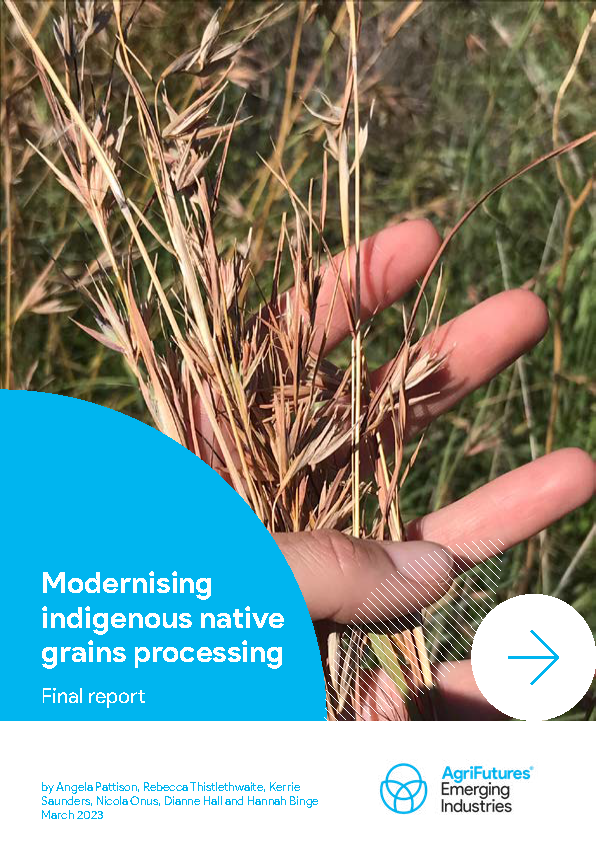For millennia, native grains have sustained First Nations peoples across Australia, intertwining with the intricate fabric of their cultures, landscapes, and food systems. These grains, though diverse in species, share a common legacy of nourishing communities while nurturing sustainable ecosystems.
In recent times, there has been a resounding call to revive these native grassland-based food systems, driven by cultural, environmental, economic, and social factors. Bridging ancient wisdom with modern needs provided an opportunity, particularly in the realm of seed processing, where labourintensive traditional methods meet the efficiency demands of contemporary food industries.
This project respectfully blended ancient and modern knowledge, to uncover techniques and technologies that harmonize with the three pillars of sustainability: economic viability, environmental stewardship, and cultural integrity.
Through extensive dialogue with key knowledge holders, encompassing both Indigenous and non- Indigenous perspectives, and a comprehensive review of historical seed processing methods, a conceptual framework emerged. This framework delineates the intricate steps of seed processing, balancing ancient wisdom with modern standards of food safety and industry expectations.
Practical experimentation ensued, involving rigorous testing of over thirty-three pieces of equipment across fourteen native grain species. This iterative process revealed nuanced insights into the optimal mechanisms for threshing and winnowing, categorized by the varying degrees of difficulty posed by different species.
The findings underscored the necessity for innovation, culminating in the recommendation for the development of specialized threshing equipment tailored to the unique characteristics of each species. Recommendations were made for the development of specialized equipment, including mulching threshers for native millet, bladed threshers for mitchell grass, and stone-based threshers for elongated grains like weeping grass and tall oat grass. Importantly, the imperative for co-designing these solutions with Indigenous communities is paramount, honouring traditional knowledge.
This project was completed as part of the AgriFutures Emerging Industries Program, which supports the identification and growth of new high-potential rural industries and enterprises that generate revenue from food, fibre and agritech.





